标签 遗址 下的文章
库斯科附近的萨克塞华曼印加遗址,秘鲁 Inca ruin of Sacsayhuamán near Cusco, Peru (© SL_Photography/Getty Images)
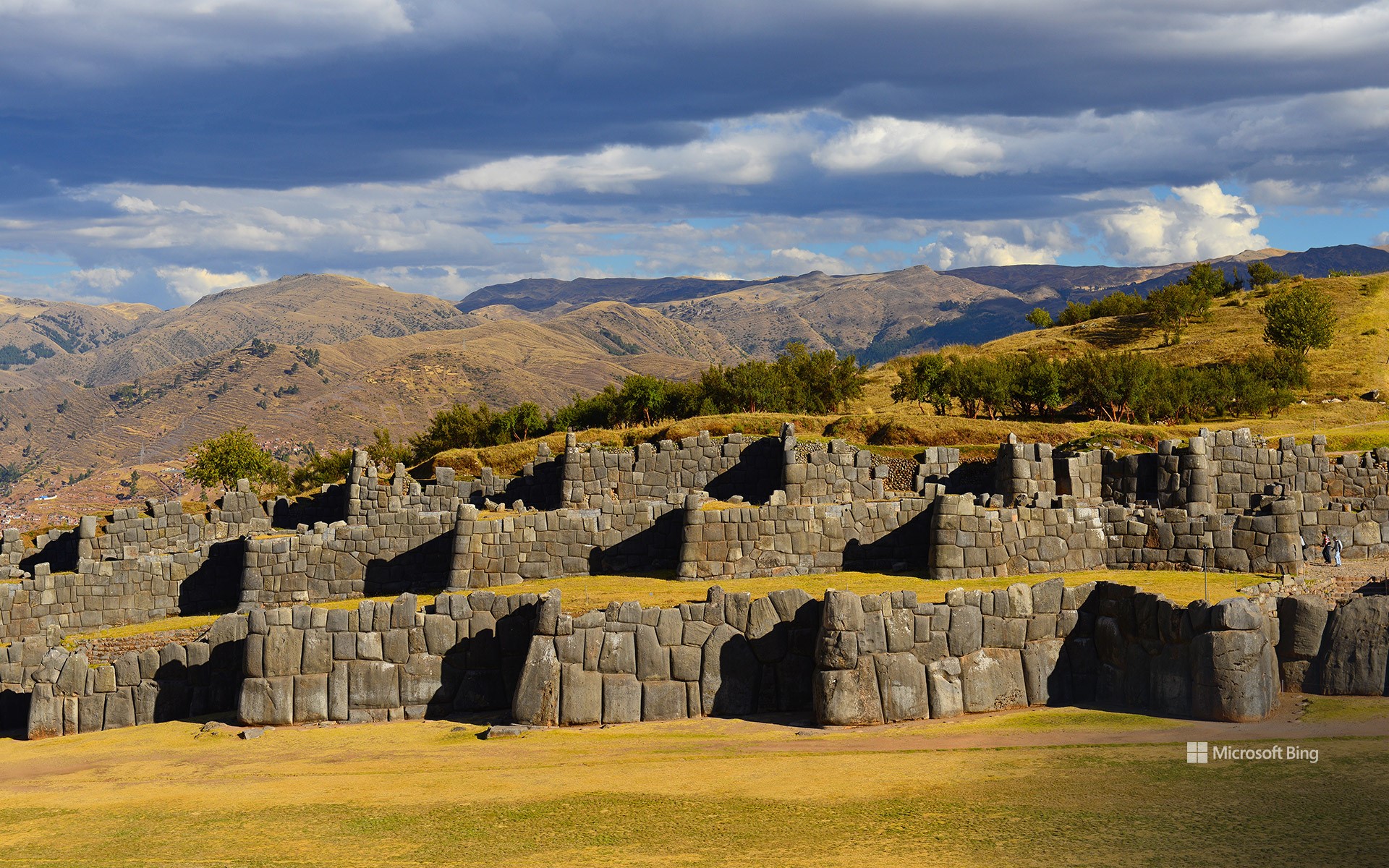
库斯科附近的萨克塞华曼印加遗址,秘鲁 Inca ruin of Sacsayhuamán near Cusco, Peru (© SL_Photography/Getty Images)
弘扬土著文化 Celebrating Indigenous culture
世界土著人民国际日
今天,我们为世界各地土著居民的遗产和文化而庆祝。从萨摩亚和格陵兰到新西兰和尼泊尔,全世界90个国家中约有5000种土著文化。他们面临的主要挑战之一是语言的消失:据估计,在全世界4000种土著语言中,约有2600种面临灭绝的危险。
在秘鲁的库斯科城,萨克塞华曼的石墙(如图所示)低声诉说着强大的印加文明的故事。在克丘亚语中,石墙的名字“Sacsayhuamán”的意思是 “让鹰感到满足的地方”。城堡的城墙建于公元15世纪,绵延1000多英尺。用来建造城墙的巨石是雕刻而成的,没有使用砂浆。1536年,印加帝国在这里的一场战役中战败后,西班牙人拆除了萨克塞华曼,余下的建筑被泥土覆盖。1934 年,人们在挖掘遗址时重新发现了它。在这一天,让我们在向土著人民致敬的同时,了解保护土著文化和智慧的重要性。
International Day of the World's Indigenous Peoples
Today we are celebrating the heritage and culture of Indigenous populations worldwide. There are some 5,000 Indigenous cultures in 90 countries around the world, from Samoa and Greenland to New Zealand and Nepal. One of the major challenges they face is the loss of their languages: It's estimated that of the 4,000 Indigenous languages in the world, around 2,600 are in danger of becoming extinct.
In the city of Cusco, Peru, the stone walls of Sacsayhuamán, seen in today's image, murmur tales of the mighty Inca civilization. The citadel's walls, which extended over 1,000 feet, were built in the 15th century. The boulders used to make them were carved and placed without mortar. After the Inca Empire was defeated in a battle here in 1536, Sacsayhuamán was dismantled by the Spanish. The rest of the structure was covered in earth until 1934, when it was rediscovered during an excavation. Today is a good day to discover more about Indigenous peoples, and the importance of preserving their cultures for future generations.
卡塞里格石圈,湖区国家公园 ,坎布里亚,英国 Castlerigg Stone Circle near Keswick, Lake District National Park, Cumbria, United Kingdom (© John Finney Photography/Getty Images)
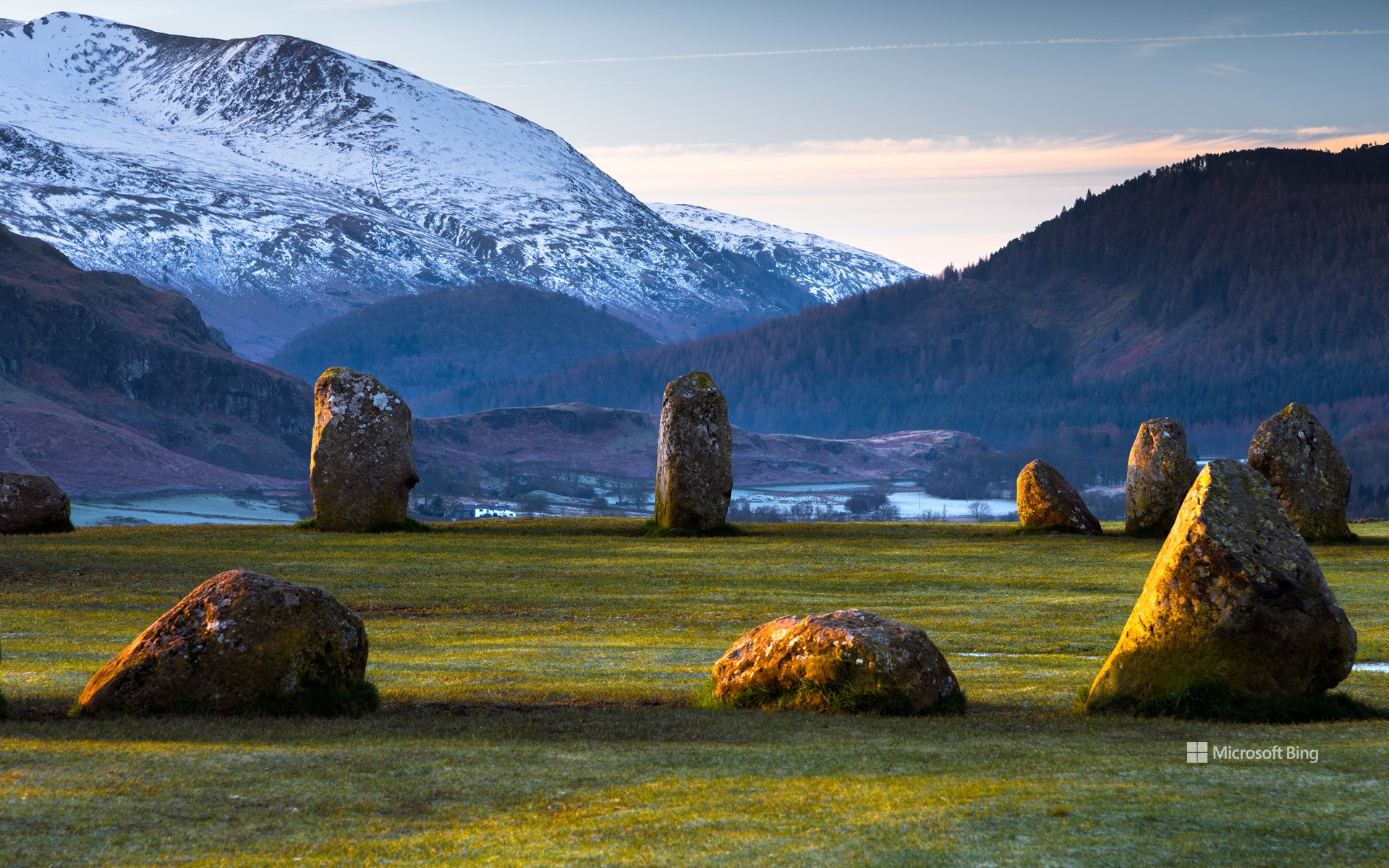
卡塞里格石圈,湖区国家公园 ,坎布里亚,英国 Castlerigg Stone Circle near Keswick, Lake District National Park, Cumbria, United Kingdom (© John Finney Photography/Getty Images)
古石圈 ancient stone circle
卡塞里格石圈
考古学家认为,古代文明排列石圈是为了让石头与月亮和太阳的位置保持一致。图中这个位于英格兰西北部湖区的卡塞里格石圈的就是这样的一个遗址。这个新石器时代的纪念碑有40块石头,呈圆形排列,其历史可以追溯到公元前3000年。虽然卡塞里格石圈的排列方式在某些方面仍然是个谜,但在几个世纪以来,其古典的魅力一直吸引着游客。
蒂卡尔的玛雅遗址,危地马拉 Mayan ruins in Tikal, Guatemala (© THP Creative/Getty Images)
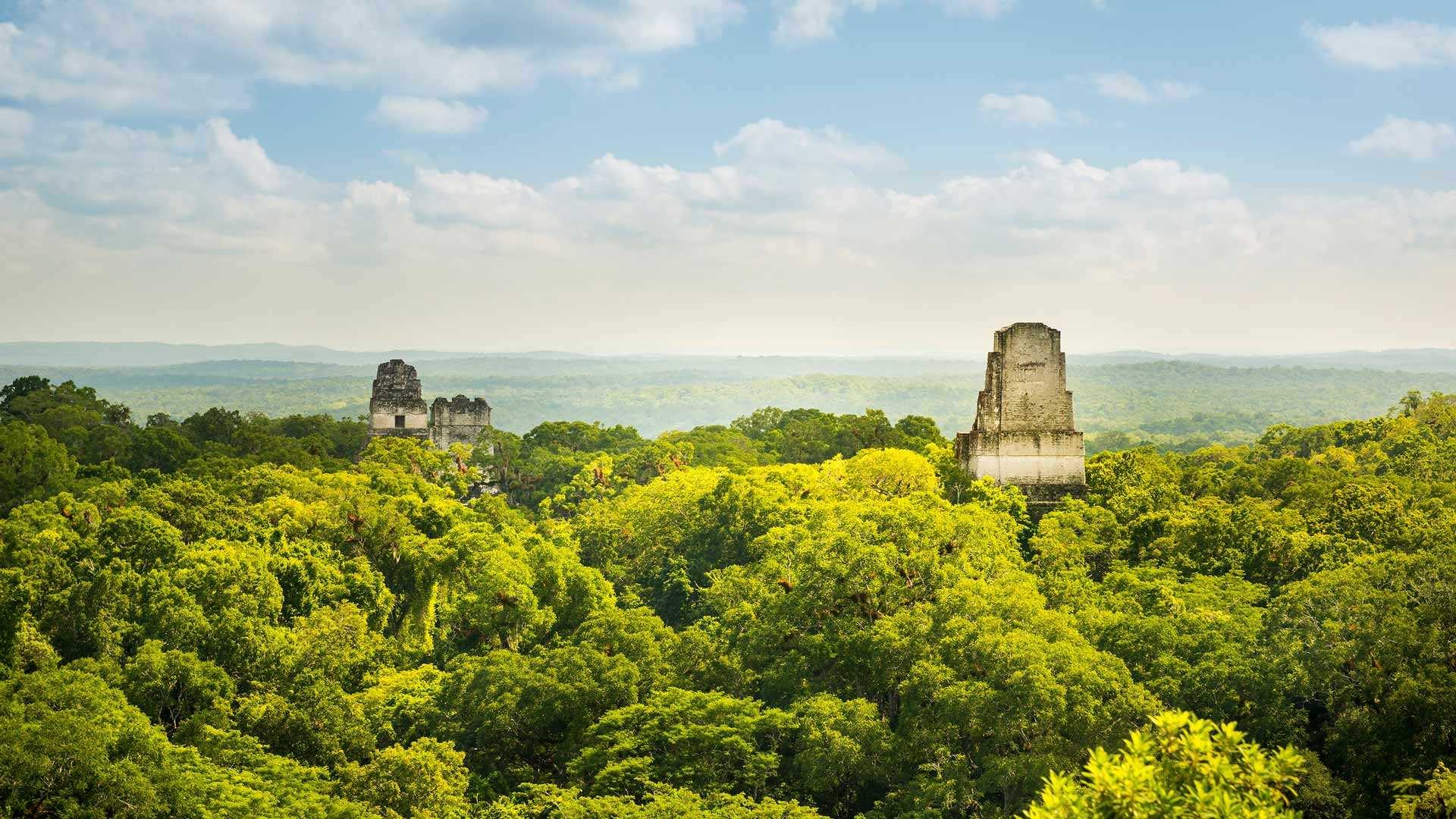
蒂卡尔的玛雅遗址,危地马拉 Mayan ruins in Tikal, Guatemala (© THP Creative/Getty Images)
原力与你同在 May the 4th be with you
星球大战日
原力与你同在!星战宇宙在几十年来一直牵动着影迷的想象力,今天是纪念星球大战的影响力的日子,就像原力一样,在我们身边随处可见。1977年上映的首部星球大战电影将我们带到了一个遥远的星系,让我们认识了一群令人难忘的角色、以及原力光明面和黑暗面之间扣人心弦的战斗。星球大战已经扩展到了电视剧、书籍、漫画、游乐园以及你可以想象到的任何一种产品。
影迷可能会觉得危地马拉的蒂卡尔古城玛雅遗迹和《星球大战:新希望》中的亚汶四号卫星的反叛军基地非常像。这些现实中的神庙就是电影中亚汶战役的取景地。亚汶战役在星战故事线中有着转折性的意义,星战宇宙中的历法被分为ABY和BBY,也就是亚汶战役前和亚汶战役后。
Star Wars Day
May the Fourth be with you! The 'Star Wars' universe has captured the imagination of fans for decades and its impact, like the 'Force,' is all around us. The original 1977 film introduced us to a galaxy far, far away, a cast of unforgettable characters, and a gripping battle between good and evil. Its reach has since extended to television, books, comics, theme parks, thousands of products, and a day of its own to celebrate the much-loved sci-fi franchise.
Fans might recognize today's image of the Mayan ruins in Tikal, Guatemala, as the rebel base on Yavin 4 from 'Star Wars: A New Hope.' These real-life temples served as a key setting in the cinematic Battle of Yavin, a fight so pivotal in the 'Star Wars' storyline that calendar years in the universe are called ABY or BBY: After the Battle of Yavin or Before the Battle of Yavin.
纳克什鲁斯塔姆遗址,伊朗波斯波利斯 Naqsh-e Rustam archaeological site near Persepolis, Iran (© mshirani/Shutterstock)
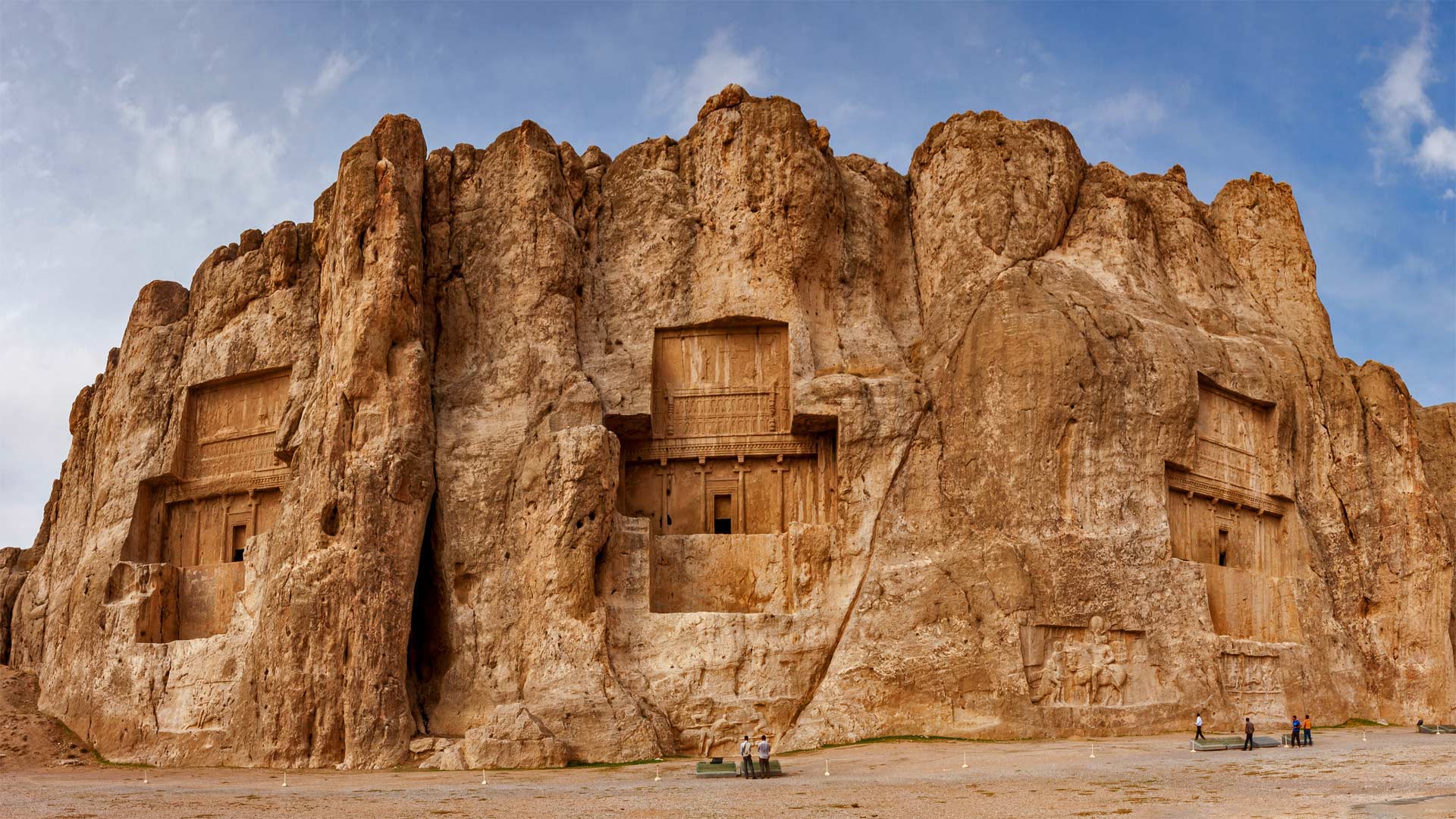
纳克什鲁斯塔姆遗址,伊朗波斯波利斯 Naqsh-e Rustam archaeological site near Persepolis, Iran (© mshirani/Shutterstock)
国际考古日 International Archaeology Day
国际考古日
Naqsh-e Rostam是一座雕刻在伊朗西南部山区的古代墓地,是古代波斯最早繁荣的文明之一的门户。四位阿契美尼德国王的陵墓(你可以在这里看到其中三位)以高高地雕刻在悬崖表面的岩石浮雕为标志。这个遗址及其周围地区对伊朗及其人民的历史具有重大意义。它们也是考古学在理解我们的过去方面所起作用的光辉范例。每年10月的第三个星期六,我们都会停下来庆祝并表彰考古学家作为人类历史解释者的贡献。
墓地是由坟墓和墓地组成的综合体,字面意思是“死者之城”这家离法尔斯省的西拉市很近。其中一座坟墓被铭文确定为大流士一世(又名大流士大帝)的安息之地,其他坟墓被认为是大流士的儿子薛西斯一世、阿尔塔克西斯一世和大流士二世的坟墓,这些人是公元前522-330年阿契美尼德王朝的领导人。纳什赫·罗斯坦也是描绘后来萨珊帝国国王的浮雕之乡,萨珊王朝是7世纪和8世纪穆斯林征服之前的最后一个伊朗帝国。只有几百码远的地方是被称为Naqsh-e Rajab的考古遗址,更多的石雕描绘了三位萨珊王朝国王和一位大祭司。虽然这些文明已经消亡,但它们创造的东西是人类历史的永久记录。
International Archaeology Day
Naqsh-e Rostam is an ancient necropolis carved into the mountains of southwestern Iran, a porthole into one of the earliest civilizations to flourish in ancient Persia. The tombs of four Achaemenid kings (you can see three of them here) are marked by rock reliefs carved high above the ground into the cliff face. This site and the area around it are of huge significance to the history of Iran and its people. They're also a shining example of the role archaeology plays in understanding our past. On the third Saturday of every October, we pause to celebrate and recognize the contributions of archaeologists as interpreters of human history.
A necropolis is a complex of tombs and burial plots, literally translated as a 'city of the dead.' This one is close to the city of Shiraz in Fars Province. One of the tombs is identified by an inscription as being the resting place of Darius I, aka Darius the Great, and the others are believed to be the tombs of Darius' son, Xerxes I, Artaxerxes I, and Darius II, leaders during the Achaemenid dynasty from 522-330 BCE. Naqsh-e Rostam is also home to relief carvings depicting kings of the later Sassanian Empire, the last Iranian empire before the Muslim conquests of the 7th and 8th centuries. Only a few hundred yards away is the archaeological site known as Naqsh-e Rajab, with more rock carvings depicting three Sassanid kings and a high priest. While these civilizations have faded, what they created endures as a permanent record of human history.
被丛林包围着的玛雅古城卡拉克穆尔遗址,墨西哥坎佩切 Ruins of the ancient Mayan city of Calakmul surrounded by the jungle, Campeche, Mexico (© Alfredo Matus/Shutterstock)
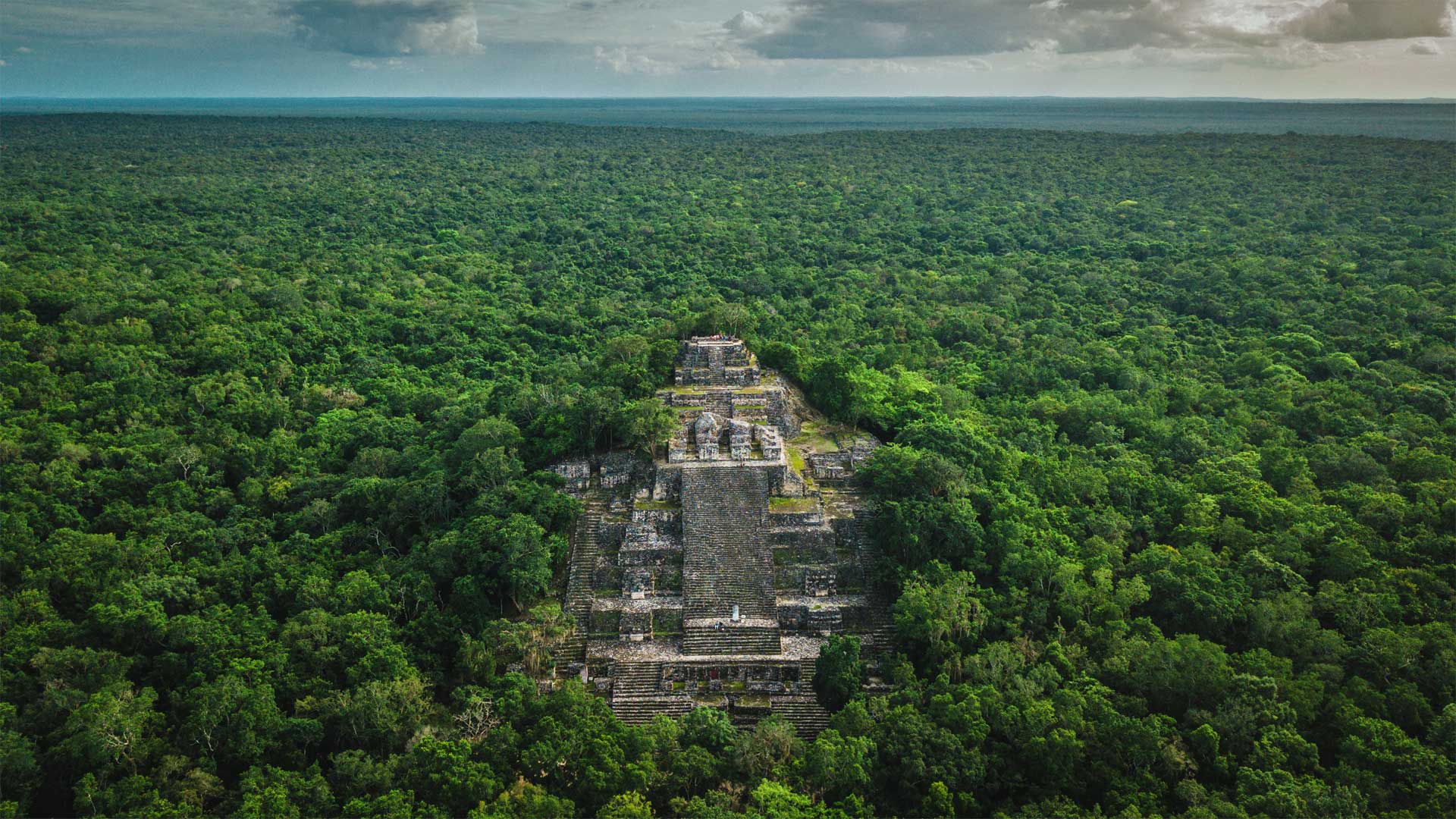
被丛林包围着的玛雅古城卡拉克穆尔遗址,墨西哥坎佩切 Ruins of the ancient Mayan city of Calakmul surrounded by the jungle, Campeche, Mexico (© Alfredo Matus/Shutterstock)
The ruins of a Mayan superpower
Deep in the jungle of southern Mexico lay the ruins of a city that thrived for centuries before it was abandoned more than 1,000 years ago. Calakmul was once one of the two dueling superpowers—along with Tikal—of the Classical Mayan civilization. At its height, around 1,200 years ago, the city of Calakmul had a population of about 50,000 people, but the kingdom as a whole numbered more than 1.5 million. Archaeologists have uncovered 6,750 structures here—the largest is this pyramid temple, called, simply, 'Structure 2.' It's one of the tallest and most massive remaining structures from that highly advanced culture. The ruins of the city proper cover nearly eight square miles in the jungle and the kingdom once ruled over settlements as far as 90 miles away.
All the more amazing, then, that it was apparently lost to history until an American botanist named Cyrus L. Lundell discovered it when flying over the jungle on a survey of the area in December 1931. A few expeditions were sent to explore it over the next few years, but it went largely unstudied until the 1980s. Calakmul is now recognized as one of the most important archeological sites in southern Mexico.
玛雅超级大国的废墟
在墨西哥南部的丛林深处,有一座城市在1000多年前被遗弃之前,已经繁荣了几个世纪。卡拉克穆尔曾是古典玛雅文明的两个决斗超级大国之一,与提卡尔一起。大约1200年前的鼎盛时期,卡拉克穆尔市的人口约为5万人,但王国整体人口超过150万。考古学家在这里发现了6750座建筑——最大的是这座金字塔神庙,简单地说,叫做"结构2"。它是高度先进文化中最高和最具大规模剩余结构之一。这座城市的废墟覆盖了丛林中近8平方英里的面积,王国曾经统治着90英里外的定居点。
更令人惊奇的是,它显然被历史所遗忘,直到1931年12月一位名叫赛勒斯·伦德尔的美国植物学家在一次对该地区的勘测中飞越丛林时发现了它。在接下来的几年里,一些探险队被派去探索它,但直到20世纪80年代它才被广泛研究。卡拉克穆尔现在被认为是墨西哥南部最重要的考古遗址之一。卡拉克穆尔现在被公认为墨西哥南部最重要的考古遗址之一。
拉斯梅德拉斯的古罗马金矿遗址,西班牙莱昂 Ancient Roman gold mining site of Las Médulas, León, Spain (© DEEPOL by plainpicture/David Santiago Garcia)
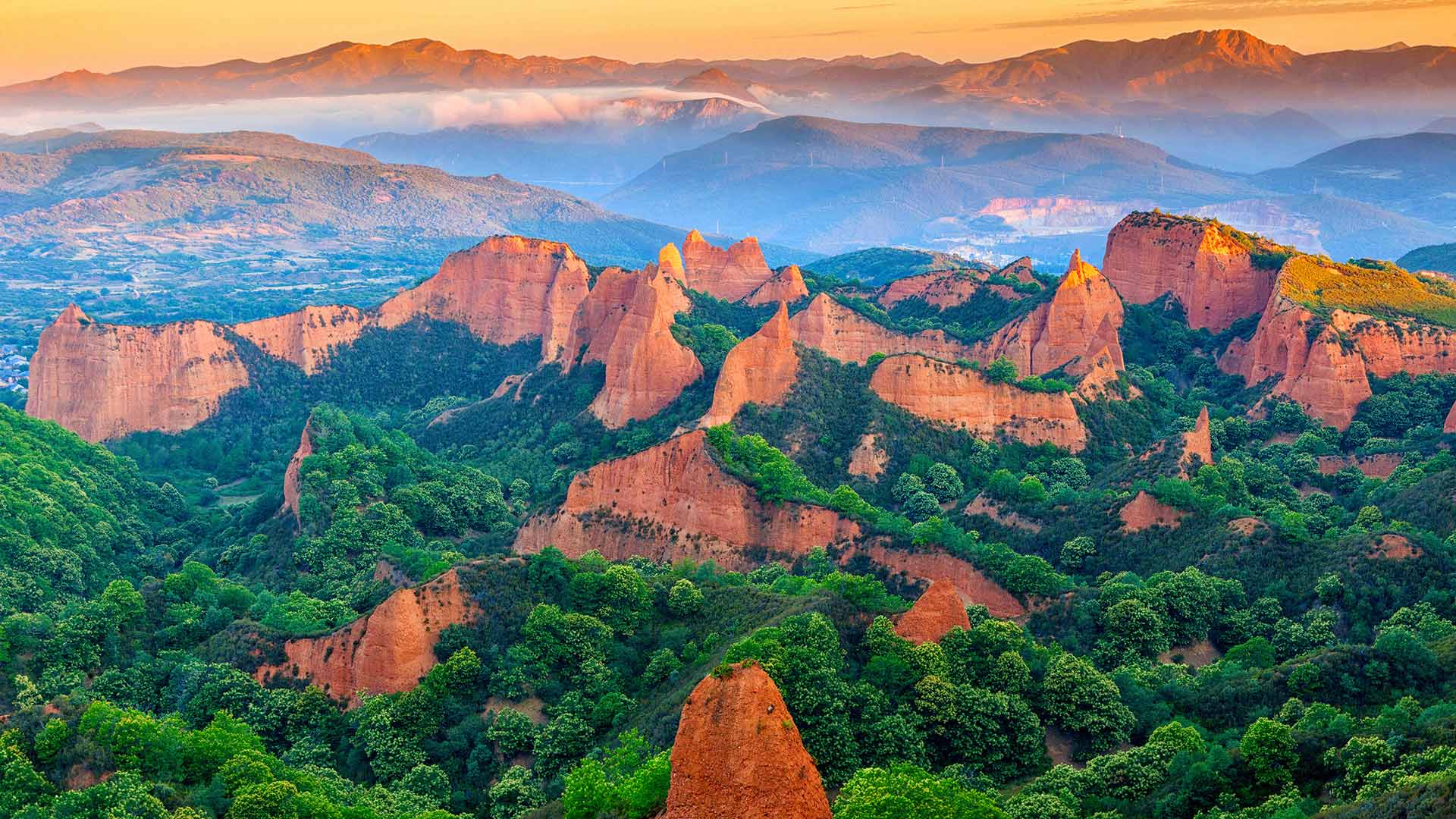
拉斯梅德拉斯的古罗马金矿遗址,西班牙莱昂 Ancient Roman gold mining site of Las Médulas, León, Spain (© DEEPOL by plainpicture/David Santiago Garcia)
The largest gold mine of the roman empire
This landscape might look natural, but it is not. At least not at a 100%. What you can see in our picture today is Las Médulas Cultural Park, in León, Spain, an ancient roman gold mining site which was as well the largest open pit one of the whole Empire.
Romans started exploiting it in the 1st century and continued doing so for 150 years at least. They removed more than 500 million cubic meters of earth and transformed the landscape forever. To extract gold they dug a complex system of tunnels inside the hills and then poured water in it to fragment the rock. It is estimated that more than 20.000 people worked in this site.
The exploitation was definitively abandoned in the 3rd century, and from that moment nature recovered what was its own. Oak trees and holm oaks grew again, and hundreds of chestnuts trees were planted. Wildlife includes roe deers, wildcats and boars, among other species.